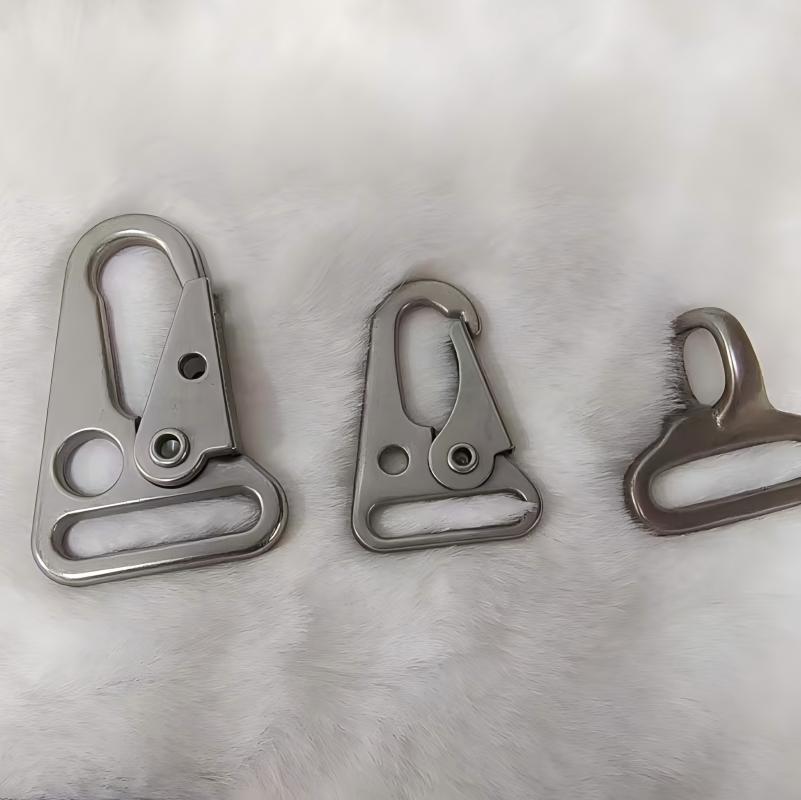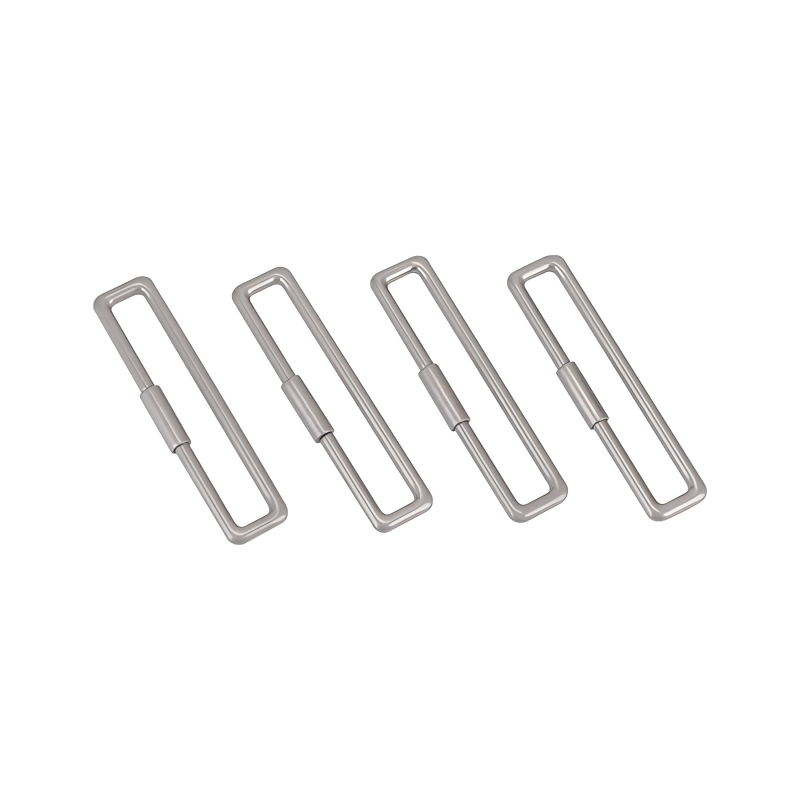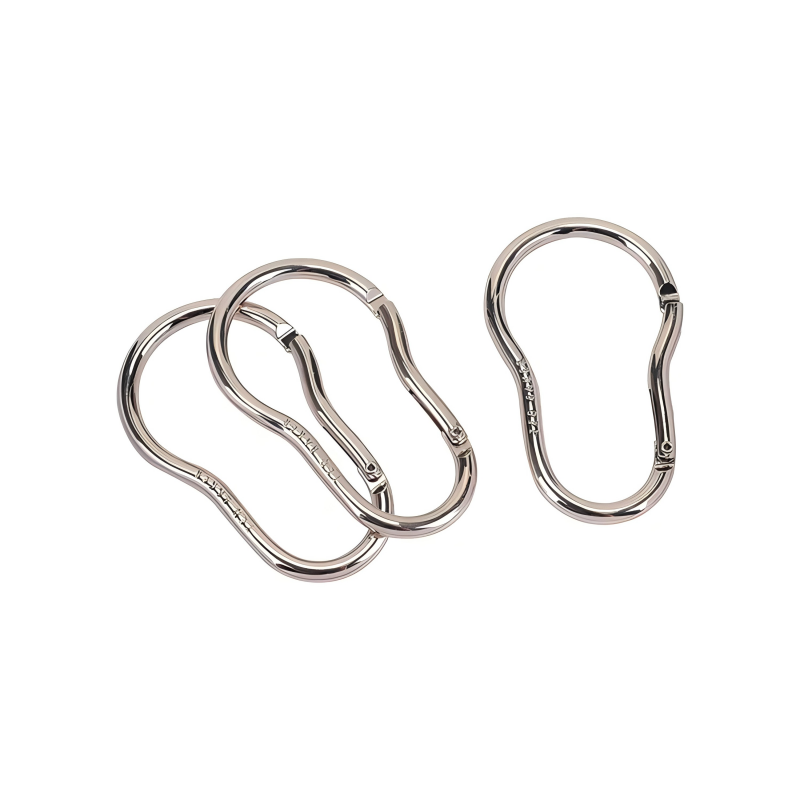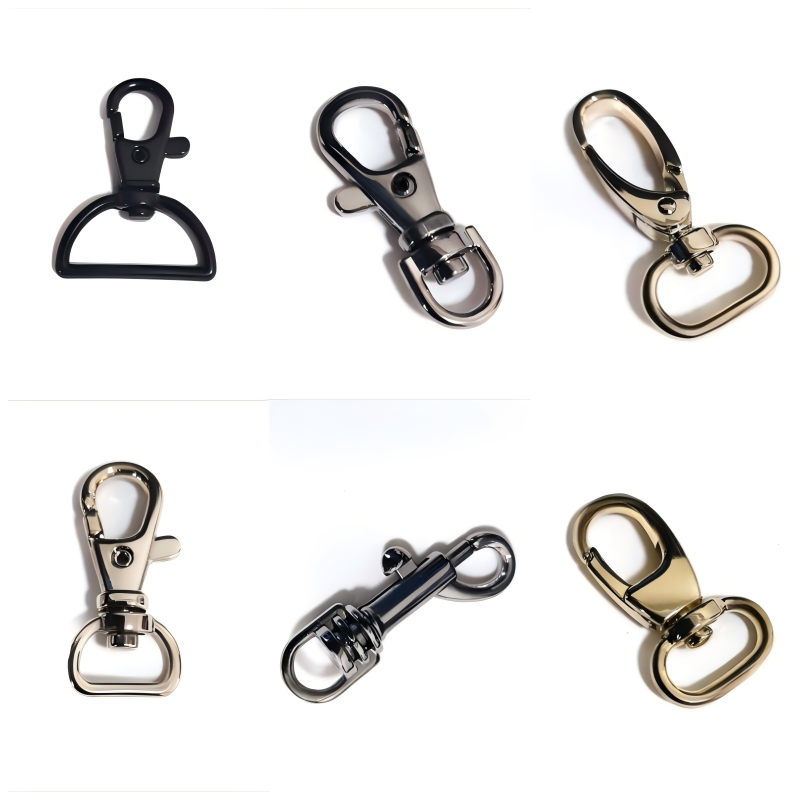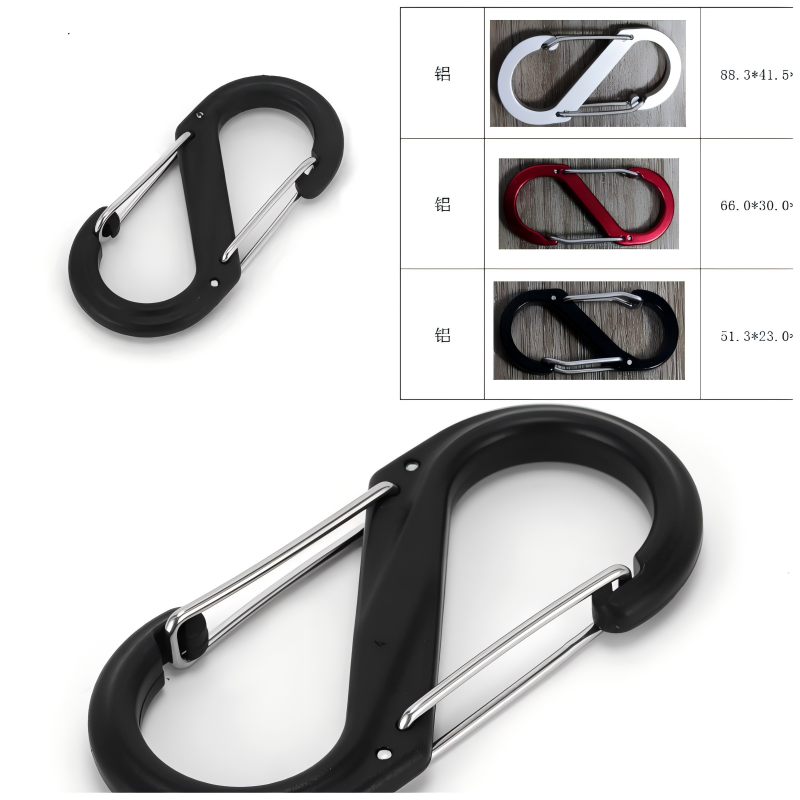Locking Carabiner & Climbing Carabiner
Locking Carabiner & Climbing Carabiner: The Unsung Heroes of Outdoor Adventures"
When you're scaling rocky peaks or hanging from a harness, the last thing you want to worry about is your gear failing you. Whether you're an amateur climber or a seasoned pro, your safety depends heavily on the quality of your equipment—particularly your carabiners. Locking carabiners and climbing carabiners may seem like small pieces of equipment, but they play a pivotal role in keeping you safe and ensuring your gear is securely attached at all times.
What Exactly Is a Carabiner?
A carabiner is a metal loop with a spring-loaded gate used to quickly and reversibly connect components, typically in climbing and mountaineering activities. Though they come in various shapes and sizes, the most important characteristic is their locking mechanism, which ensures that your gear stays firmly in place during even the most intense moments. Without this vital feature, you risk disastrous accidents due to accidental unclipping.
The Importance of Locking Mechanisms
Locking carabiners stand out because of their added feature: a locking mechanism that secures the gate shut. This simple yet effective feature prevents accidental openings, making them indispensable for critical climbing situations, such as belaying or securing rope systems. A locking carabiner gives climbers peace of mind, ensuring that their gear will not unintentionally disengage, even under the most challenging conditions.
There are generally three types of locking mechanisms:
Screw Lock: The gate locks via a screw mechanism that is twisted to ensure it stays in place. While this type is a reliable option, it requires a bit of extra effort to open, which means it can be slower in urgent situations.
Twist Lock: With this locking mechanism, the carabiner gate is locked by a twist motion. This is a faster option but may not be as secure as a screw-lock carabiner for more extreme environments.
Auto-locking: A modern option for advanced climbers, these carabiners automatically lock when the gate is closed, making them highly convenient when you need to make swift adjustments or repositioning.
Climbing Carabiners: Strong, Reliable, and Versatile
Climbing carabiners, on the other hand, are designed for a broader range of uses in climbing beyond locking and securing ropes. These types of carabiners are typically lighter and are available in a variety of shapes, including oval, D-shaped, and pear-shaped. The shape influences the carabiner’s strength, the way the load is distributed, and how it interacts with ropes and other equipment.
A D-shaped carabiner, for instance, distributes weight efficiently because of its design, allowing for optimal strength while keeping the carabiner lightweight. This type is ideal for anchoring systems and creating connections between ropes, harnesses, and belay devices.
While pear-shaped carabiners are ideal for attaching to a harness and keeping things aligned when managing multiple ropes, they offer increased stability and are generally preferred by professional climbers. Each style is engineered to excel in different types of climbing setups, whether you're using the carabiner for belaying, rappelling, or simply securing other equipment.
Durability and Materials Matter
A high-quality locking carabiner or climbing carabiner is crafted from robust materials such as aluminum alloy or steel. While aluminum offers a lightweight alternative perfect for long climbs, steel carabiners tend to offer greater strength and durability, especially in more extreme climbing conditions.
Anodized finishes on aluminum carabiners provide corrosion resistance, making them ideal for use in diverse weather conditions. Steel, though heavier, is often used in industrial climbing applications or for those requiring maximum strength, such as rock climbing or caving.
Essential Features to Look for in a Locking Carabiner
When selecting a locking or climbing carabiner, it’s important to ensure it meets your specific climbing needs. Here are some essential features to consider:
Weight: A carabiner should be light enough to not add unnecessary weight to your gear while still being strong enough to hold heavy loads.
Gate Opening Size: The wider the opening, the easier it will be to clip in ropes or gear. However, larger openings can also increase the risk of unintentional unclipping. It’s a delicate balance.
Strength Rating: Every carabiner comes with a specific breaking strength rating, often displayed in kilonewtons (kN). Choose a carabiner that exceeds the required strength for your climbing or mountaineering needs.
Gate Mechanism: Whether you prefer a screw-lock, twist-lock, or auto-locking gate, the system should feel smooth and secure, with no room for accidental disengagement.
Shape and Design: Depending on your climbing discipline, you’ll need a carabiner that’s well-suited for your particular style, whether it’s alpine climbing, sport climbing, or bouldering. Pear-shaped carabiners tend to be the most versatile, while D-shaped models are ideal for rope management.
Where Are Locking Carabiners Used?
Locking carabiners and climbing carabiners aren’t just used by climbers—they are essential gear for anyone who needs to secure heavy objects safely. From mountaineers who scale peaks in remote regions to hikers who require secure equipment for trekking through rough terrains, these carabiners prove indispensable.
Even beyond climbing, these robust tools are widely used in rescue operations, industrial work, and outdoor adventures like camping, ziplining, and canyoning, providing versatility and confidence in all high-stakes environments.
Conclusion
When it comes to climbing gear, a locking carabiner or climbing carabiner is far more than just an accessory—it's an absolute necessity. These reliable devices keep you connected to your rope, your equipment, and ultimately, your safety. No matter how intense the climb or strenuous the environment, investing in the best locking carabiners is a step toward ensuring you're always ready to face the next challenge with confidence.
Whether you’re scaling cliffs, hanging from a rope, or just securing gear, choose a carabiner that gives you both peace of mind and the performance you need. After all, your safety is in your hands—and in the strength of your carabiner.
